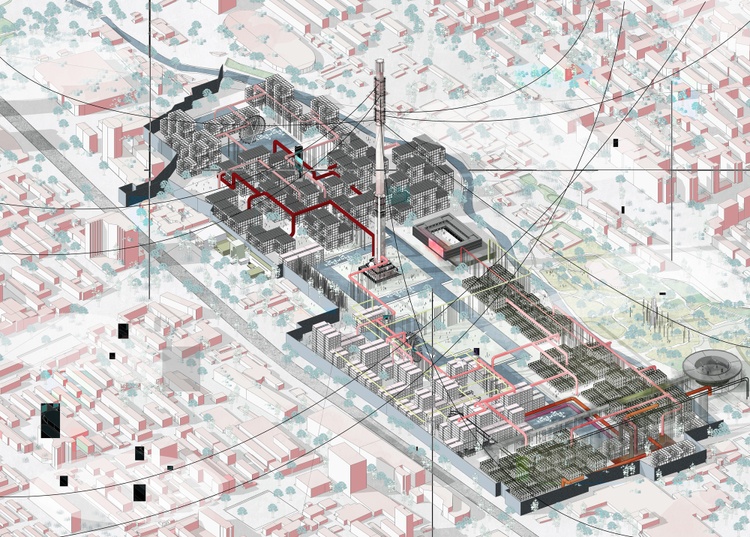Exactly How CDA Architects Integrate Eco-Friendly Practices in Architectural Projects
Exactly How CDA Architects Integrate Eco-Friendly Practices in Architectural Projects
Blog Article
The Influence of Technical Innovations on the Layout Practices of Contemporary Architects
The quick evolution of technical tools has dramatically reshaped the layout landscape for contemporary designers, cultivating unmatched degrees of innovation and sustainability. Checking out these characteristics exposes a nuanced interaction between technology and typical layout techniques, prompting a better examination of what the future holds for architectural techniques.
Development of Architectural Devices
Just how have building devices changed the style and building processes over the centuries? The development of architectural tools has significantly impacted the performance, precision, and creative thinking of layout and construction.
With the introduction of the Renaissance, the introduction of the compass and the protractor marked a critical shift. These devices made it possible for engineers to attain better precision in their layouts, promoting the appearance of even more detailed and in proportion buildings. The Industrial Change additionally transformed architectural technique with the introduction of mechanical devices and materials, permitting for larger and more ambitious jobs.
In the 20th century, the development of computer-aided style (CAD) software changed the landscape when again, offering engineers with unmatched capacities in modeling and visualization. Today, advanced devices such as Building Details Modeling (BIM) and parametric design software program continue to press the boundaries of building advancement, enabling an extra integrated technique to design and building processes.
Boosted Partnership in Layout
As technology proceeds to evolve, improved cooperation in design has actually come to be a cornerstone of contemporary building practice. The combination of electronic tools such as Building Details Modeling (BIM), cloud-based systems, and advanced visualization software application has actually transformed the way designers, designers, and stakeholders communicate throughout the style procedure. These devices help with real-time interaction, permitting teams to share ideas, alterations, and responses promptly, regardless of geographical location.

Additionally, interdisciplinary partnership has been streamlined through these technological developments, allowing designers to work extra very closely with other professionals, such as metropolitan planners and environmental specialists. The outcome is an extra natural approach to make that considers various perspectives and know-how. Ultimately, improved collaboration in style is not simply a pattern; it is essential for producing cutting-edge, practical, and visually pleasing design in a progressively complicated world.
Sustainability With Technology
Sustainability in style has actually increasingly ended up being intertwined with technological development, driving the sector toward environmentally accountable techniques - More hints cda architects. Contemporary architects are leveraging sophisticated modern technologies to minimize environmental effect while boosting the performance of buildings. One noticeable example is using Building Details Modeling (BIM), which enables for specific planning and resource allotment, lowering waste throughout construction and promoting energy effectiveness throughout a building's lifecycle
Additionally, clever products and energy-efficient systems are being incorporated right into designs to optimize resource usage. Technologies such as photovoltaic cells and eco-friendly roof systems harness renewable resource sources, adding to minimized carbon impacts. In addition, the application of expert system in layout procedures makes it possible for engineers to simulate and analyze energy consumption, guiding decisions toward even more lasting end results.
The integration of sustainable technologies not only aligns with global environmental goals however likewise fulfills an increasing demand from consumers for environment-friendly options. As designers accept these technologies, the emphasis moves towards producing areas that are not just visually pleasing however likewise functionally sustainable, consequently redefining the requirements of contemporary style. By doing this, technology serves as a driver for sustainability, allowing designers to develop buildings that regard and improve the natural atmosphere.
Obstacles in Application
While technological innovations in style hold great pledge for boosting sustainability, their execution usually runs into significant obstacles - cda architects. One primary barrier is the high understanding contour related to new modern technologies. Designers and construction professionals might need substantial training to efficiently utilize advanced software program and devices, which can postpone task timelines and boost costs
In addition, the assimilation of emerging modern technologies, such as Building Details Modeling (BIM) and sustainable materials, commonly requires cooperation across multidisciplinary groups. This collaboration can be impeded by distinctions in expertise, operations, and interaction styles, leading to potential problems and inadequacies.
Financial restrictions even more complicate see the fostering of ingenious technologies. Lots of building firms, specifically smaller sized ones, may lack the resources to buy cutting-edge devices, limiting their ability to contend with larger firms that can pay for such financial investments.
In addition, regulatory frameworks and structure codes might not equal technical advancements, creating ambiguity and potential compliance issues. This challenge can discourage architects from fully embracing brand-new modern technologies, as the threat of non-compliance might surpass the advantages. Therefore, addressing these implementation challenges is crucial for the successful integration of technical innovations in modern architectural practices.
Future Patterns in Architecture
The challenges linked with the execution of brand-new innovations in architecture have actually triggered a reevaluation of future patterns within the industry. As engineers browse problems such as sustainability, urbanization, and advice social equity, they are progressively adopting cutting-edge innovations to improve design efficiency and ecological performance.
One prominent fad is the assimilation of expert system (AI) in the style process. AI tools can evaluate large datasets to notify design decisions, boosting both creative thinking and performance. In A Similar Way, Structure Details Modeling (BIM) remains to advance, making it possible for real-time cooperation amongst stakeholders and assisting in structured project management.
Sustainable layout methods are likewise acquiring energy, with designers focusing on flexible reuse and regenerative style principles that minimize resource intake and waste. The consolidation of smart products and renewable resource sources will certainly additionally enhance the resilience of structures in the face of environment modification.

Verdict
Technical improvements have substantially reshaped building design methods, helping with boosted precision, partnership, and sustainability. The integration of tools such as Structure Information Modeling and parametric layout software, together with artificial knowledge and clever materials, encourages architects to deal with intricate challenges a lot more effectively.
Report this page